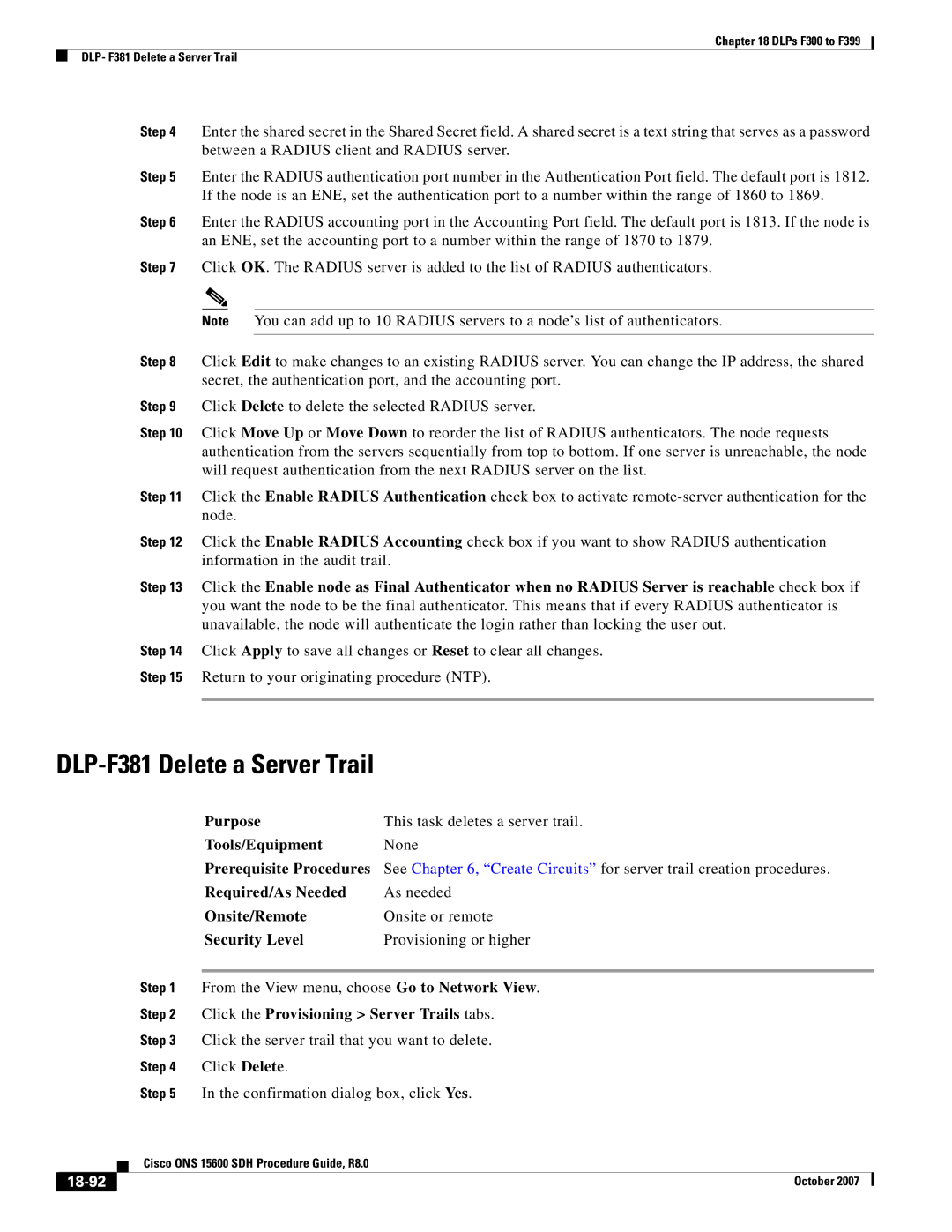
Chapter 18 DLPs F300 to F399
DLP- F381 Delete a Server Trail
Step 4 Enter the shared secret in the Shared Secret field. A shared secret is a text string that serves as a password between a RADIUS client and RADIUS server.
Step 5 Enter the RADIUS authentication port number in the Authentication Port field. The default port is 1812. If the node is an ENE, set the authentication port to a number within the range of 1860 to 1869.
Step 6 Enter the RADIUS accounting port in the Accounting Port field. The default port is 1813. If the node is an ENE, set the accounting port to a number within the range of 1870 to 1879.
Step 7 Click OK. The RADIUS server is added to the list of RADIUS authenticators.
Note You can add up to 10 RADIUS servers to a node’s list of authenticators.
Step 8 Click Edit to make changes to an existing RADIUS server. You can change the IP address, the shared secret, the authentication port, and the accounting port.
Step 9 Click Delete to delete the selected RADIUS server.
Step 10 Click Move Up or Move Down to reorder the list of RADIUS authenticators. The node requests authentication from the servers sequentially from top to bottom. If one server is unreachable, the node will request authentication from the next RADIUS server on the list.
Step 11 Click the Enable RADIUS Authentication check box to activate
Step 12 Click the Enable RADIUS Accounting check box if you want to show RADIUS authentication information in the audit trail.
Step 13 Click the Enable node as Final Authenticator when no RADIUS Server is reachable check box if you want the node to be the final authenticator. This means that if every RADIUS authenticator is unavailable, the node will authenticate the login rather than locking the user out.
Step 14 Click Apply to save all changes or Reset to clear all changes.
Step 15 Return to your originating procedure (NTP).
DLP-F381 Delete a Server Trail
Purpose | This task deletes a server trail. |
Tools/Equipment | None |
Prerequisite Procedures | See Chapter 6, “Create Circuits” for server trail creation procedures. |
Required/As Needed | As needed |
Onsite/Remote | Onsite or remote |
Security Level | Provisioning or higher |
Step 1 From the View menu, choose Go to Network View.
Step 2 Click the Provisioning > Server Trails tabs.
Step 3 Click the server trail that you want to delete.
Step 4 Click Delete.
Step 5 In the confirmation dialog box, click Yes.
| Cisco ONS 15600 SDH Procedure Guide, R8.0 |
| October 2007 |
